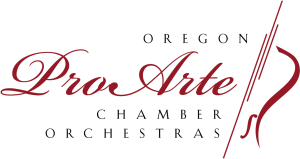In recent years, the landscape of classical music criticism has undergone a transformation as radical as the changes seen in the broader media world. The digital age has shifted the paradigms of how critiques are shared, who writes them, and what the audience expects
A New Platform for Critics
The transition from print to digital platforms has been one of the most significant changes affecting how classical music is critiqued. Previously, esteemed publications like The New York Times or The Guardian held the monopoly on authoritative voices in classical music review. Critics such as Alex Ross or Anthony Tommasini were (and remain) influential figures, guiding public perception and understanding of classical performances and compositions.
Today, numerous online platforms and blogs allow a much more diverse group of voices to be heard. Platforms like Medium, personal blogs, and even YouTube channels offer musicians, educators, and amateur enthusiasts the tools to share their perspectives on classical pieces, performances, and recordings. This democratization has challenged traditional gatekeeping in media but also introduces a challenge in maintaining a consistent standard of critique.
Social media has revolutionized the landscape of classical music criticism by introducing a level of immediacy and interactivity unheard of in traditional media. On platforms like Twitter, Facebook, and Instagram, users—ranging from professional critics to casual listeners—can share their reactions to performances and recordings instantly. This capability significantly amplifies the influence of public opinion, as opinions are formed and circulated long before traditional reviews could be published in the past. The impact of this shift is profound: performances can go viral, gaining acclaim or notoriety overnight, and artists can receive instantaneous feedback from audiences worldwide.
The interactive nature of social media platforms fosters a more dynamic exchange among all stakeholders involved in classical music. Critics can engage directly with performers and audiences in discussions, debates, or informal chats, providing richer, more nuanced insights into the works being performed. This interaction can enhance the overall understanding and appreciation of classical compositions, offering a multi-dimensional perspective that traditional media outlets might overlook.
This blending of professional and personal spaces on social media can also complicate the integrity of music criticism. The personal nature of social media interactions can obscure the distinction between objective critique and personal opinion. Critics might feel pressure to temper their reviews to maintain relationships within the industry, or conversely, they might express overly harsh criticisms influenced by personal biases rather than strictly professional judgments. These platforms can become breeding grounds for conflicts of interest, as critics and performers form networks that may influence the critic’s impartiality. This blending of roles and opinions on such a public and influential platform can lead to a distortion of public perception, affecting how performances and artists are viewed by audiences worldwide. While social media can enrich the discussion around classical music, it also brings challenges that need to be navigated carefully to maintain the credibility and objectivity essential to valuable criticism.
What Audiences Seek
Audiences today are looking for more than a judgmental overview from classical music criticisms; they seek an enriching experience that ties historical context, performer background, and music theory into an accessible narrative. Readers and listeners want stories that inform and entertain and connect them emotionally to the music.
This shift has encouraged critics to explore more dynamic ways of writing that evaluate a performance’s technical execution and delve into its emotional depth and cultural significance. The rise of multimedia elements, like embedded music files, videos, and interactive diagrams, has helped critics craft more comprehensive and engaging articles that appeal to connoisseurs and newcomers alike.
The Role of Educational Outreach in Criticism
Another key development in 21st-century classical music criticism is the emphasis on educational outreach. Critics are increasingly taking on the role of educators — not just assessing performances but also explaining complex musical concepts in layman’s terms. This educational approach helps demystify classical music, making it more accessible to a broader audience.
Educational efforts are supported by detailed program notes, pre-concert talks, and even interactive seminars that some critics partake in, aiming to foster a deeper understanding and appreciation of classical music among audiences. By supporting these educational endeavors, critics enhance their credibility and contribute to cultivating a more informed and engaged listening public.
Maintaining Objectivity and Relevance
Despite the expanded platforms and tools available, modern critics face the challenge of maintaining objectivity in their reviews. With increased personal interaction with artists through social media and real-time feedback mechanisms, ensuring unbiased critiques can be problematic. The pressure to stay relevant in an ever-competitive digital space can tempt critics to favor sensationalism or superficial praise over thoughtful critique.
The proliferation of “everyone-a-critic” mentality facilitated by online platforms can sometimes dilute the perceived value of professional criticism. The challenge for seasoned critics is to adapt to the new media landscape while maintaining rigorous standards of analysis and assessment.
The Future of Classical Music Criticism
It is clear that classical music criticism is set to evolve further. Critics must continue adapting to new technologies and shifting audience expectations while upholding the vital role of providing insightful, informed commentary on classical music .Through embracing new media formats, engaging with audiences on more personal levels, or supporting educational initiatives, the future of classical music criticism looks poised to expand its influence and reach in the digital era.
Engaging with classical music criticism today means navigating a complex landscape of old and new media, evolving audience expectations, and a broader array of voices than ever before. Critics play an integral role in education and engagement, facilitating a richer, more inclusive experience of classical music that resonates with audiences old and new.

